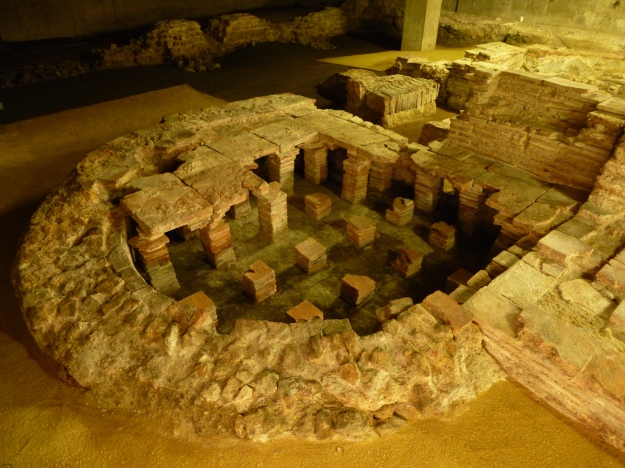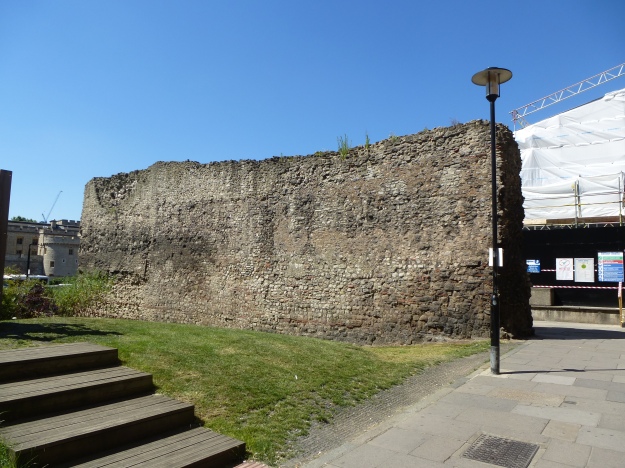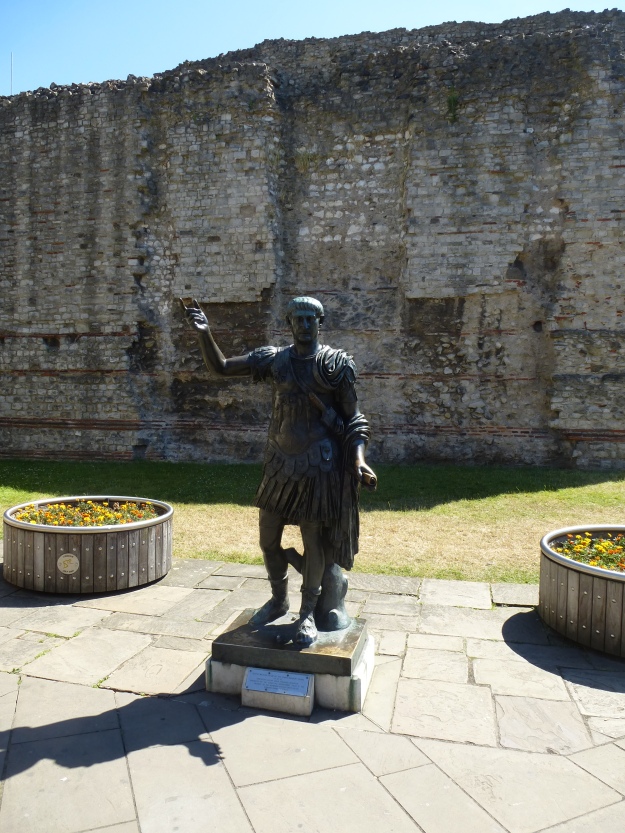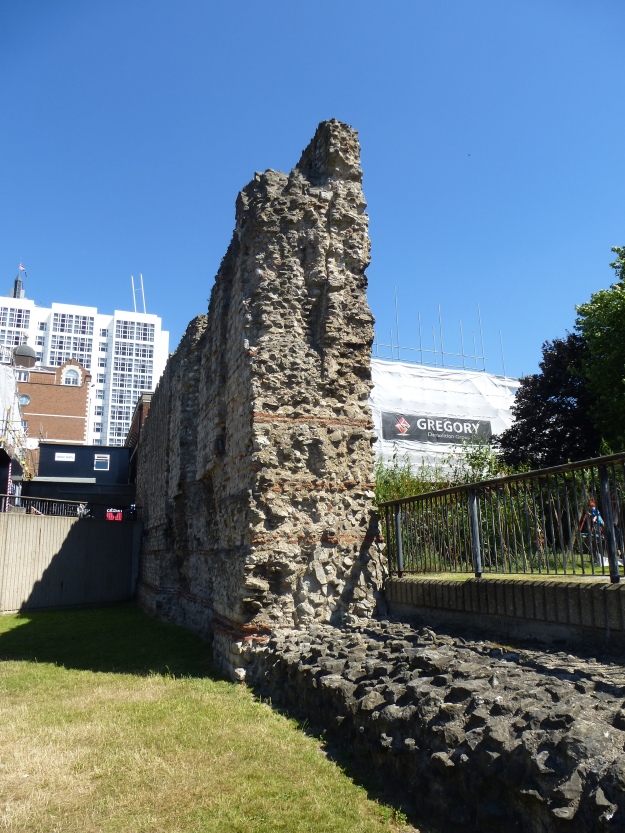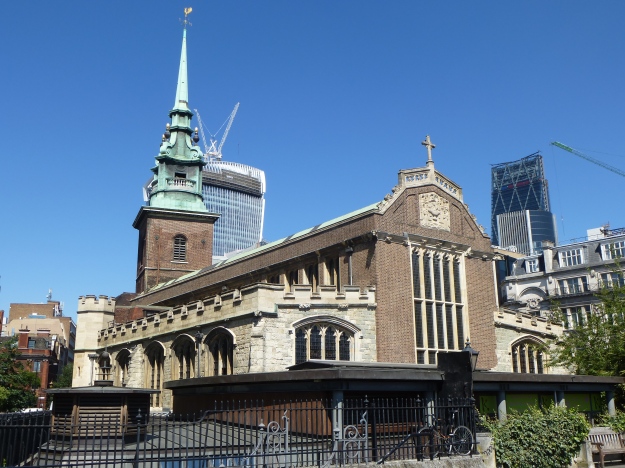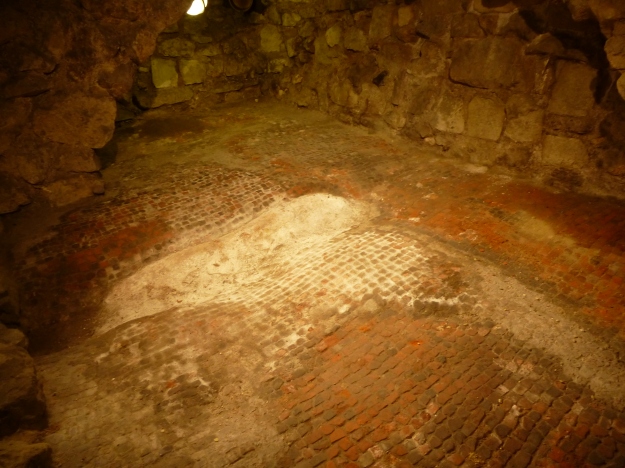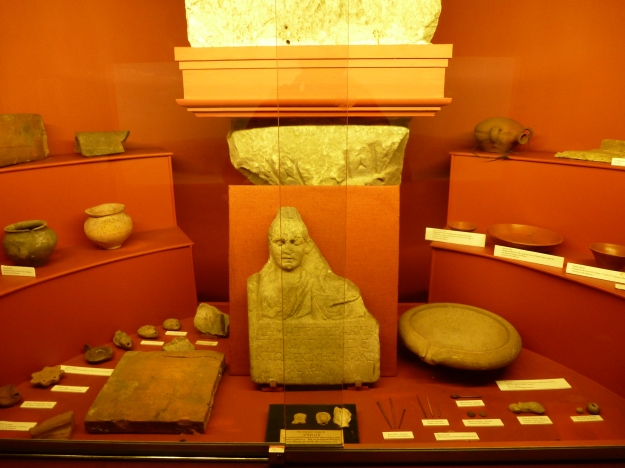Thanks to the London Open House event, this weekend offered a rare opportunity to visit one of London’s hidden Roman gems, Billingsgate Roman House and Bathhouse. Now located deep in a basement under a modern office block, these Roman remains are the best preserved in the city, and a recently installed walkway now allows visitors to get a great overview of the entire site. Given the limited chances available to view it, its perhaps not surprising that Billingsgate Roman House and Bathhouse attracted huge crowds, the queue for entry stretching right along Lower Thames Street.
First discovered in 1848, the site was further excavated in the late 19th and mid to late 20th centuries. The house was probably first built in the 2nd century CE, and due to changes in the level of the Thames, would once have sat right on the river bank. The building underwent various alterations, taking its final form in the 3rd century when the small bathhouse was added in its courtyard. The addition of this bathhouse has suggested to modern archaeologists that the house may have been converted into a mansio, or inn, around this time.
Billingsgate House and Bath house is the only surviving example of Londinium‘s domestic buildings. The extensive use of stone in its construction suggests that it was a high-status residence, as does the use of hypocausts to heat its main rooms.
As Roman power in Britain began to fade, the north wing of the house seems to have been deserted first. A hoard of over 270 late Roman coins found hidden in the furnace wall in the east wing suggest that this section, along with the bath, was in use into the early 5th century. Finally the site was totally abandoned, buried under layers of debri and later buildings until its rediscovery just over 160 years ago.
Unfortunately the Billingsgate Roman House and Bathhouse is only open on a few days every year. Look out for forthcoming dates on the website of London Open House.
More details about the Billingsgate Roman House and Bathhouse can be found here, and a number of the discoveries made during the excavation can also be viewed at the nearby Museum of London.




